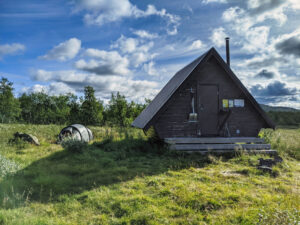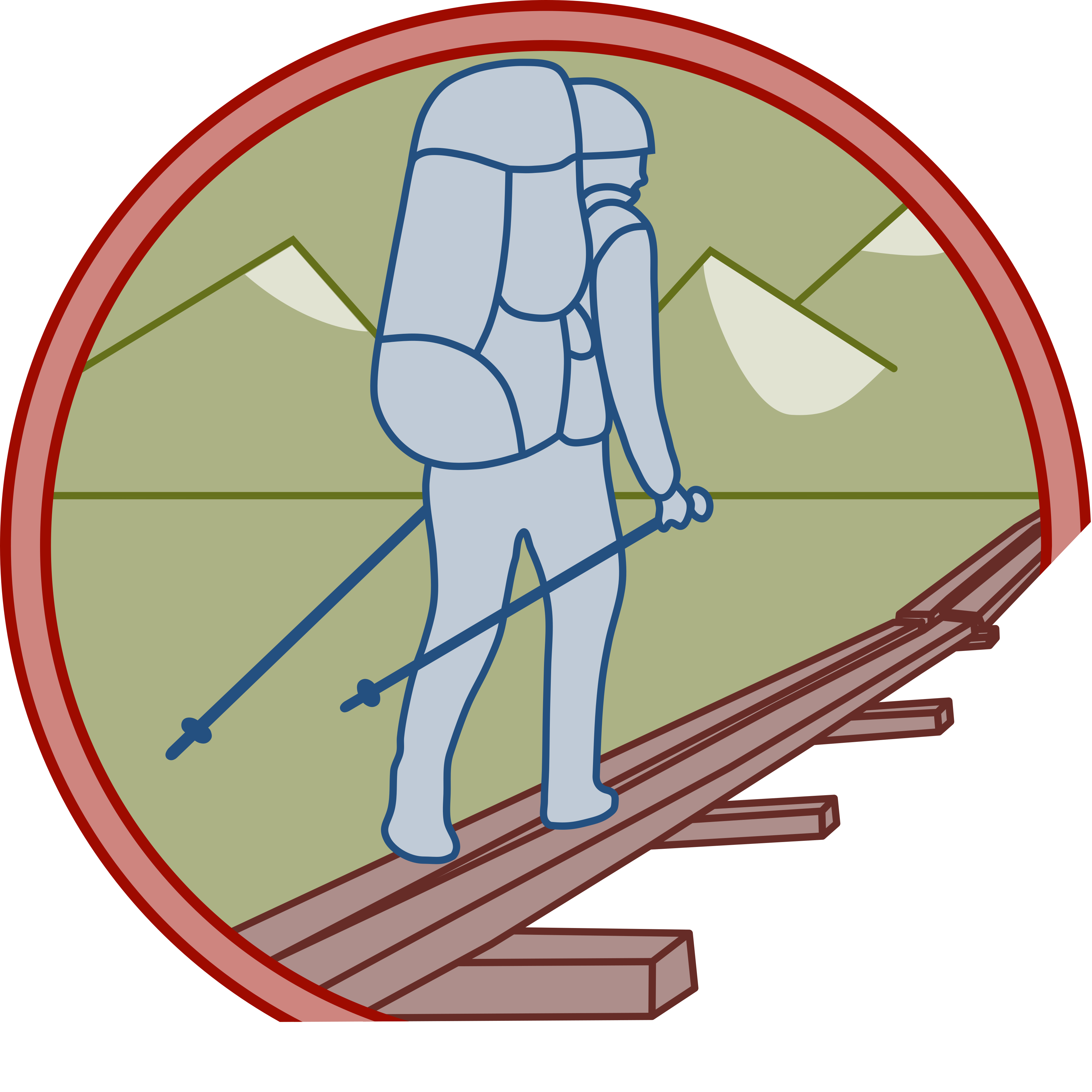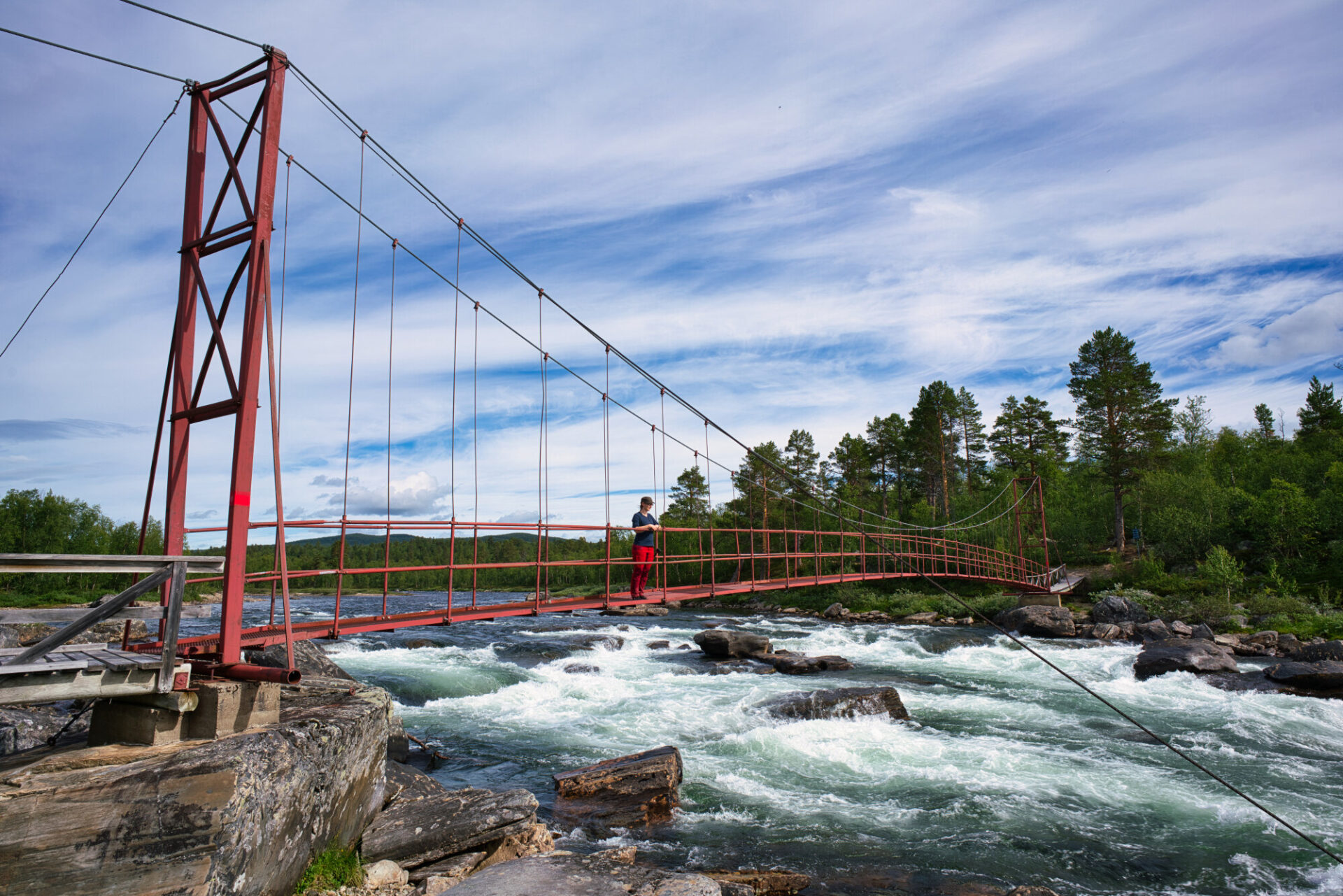In bright sunshine we have breakfast with a view of the river Laisälven. Here at the delta it flows gently along and the water seems almost to stand still. While we pack up, some clouds are already moving in and we realize that the weather will not stay that great on our way to the Sjnulttjie hut. The stage starts in the forest, but today it seems friendlier, easier to walk on. After about an hour we are back at Laisälven: here the water shoots downstream in mighty rapids under the first bridge of the day.
Amazed, we look at the roaring water and immediately take the first break. Manuel unpacks the camera and takes some pictures, while I sit in the sun and watch the river with fascination. The power of the water is enormous, nevertheless it is crystal clear and the stones on the bank and on some river islands are round cut. There must be times when this now already quite large river has significantly more water.
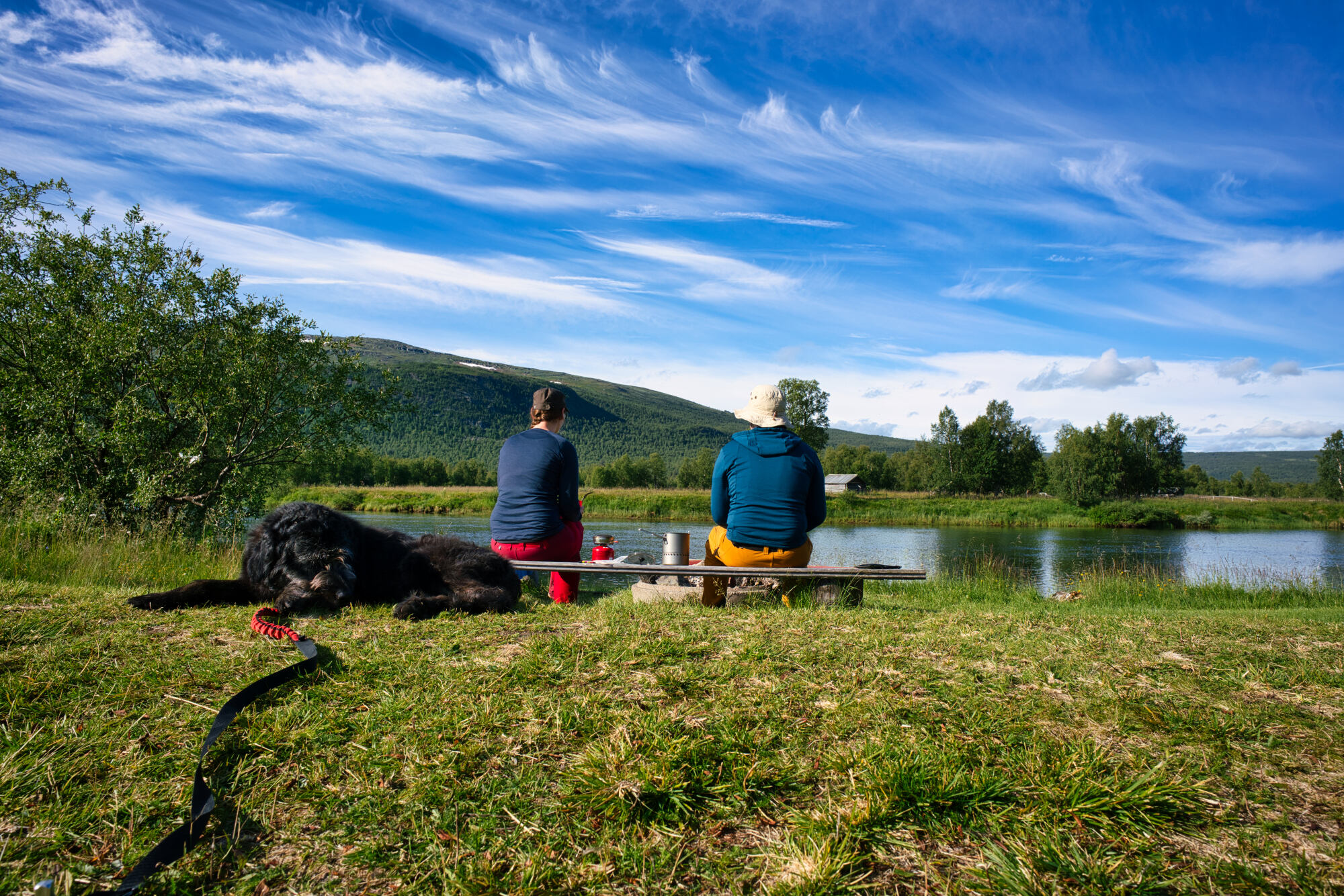
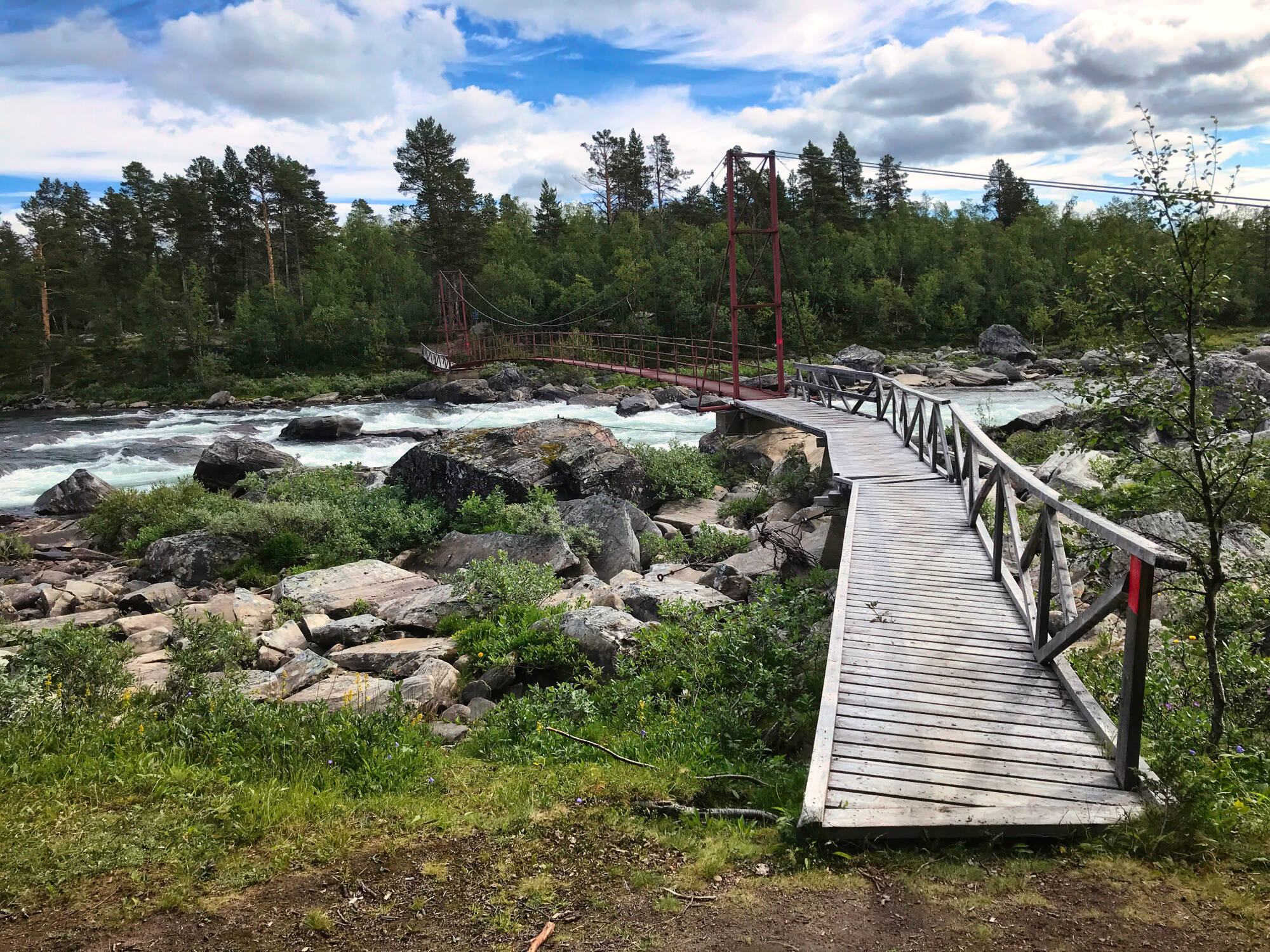
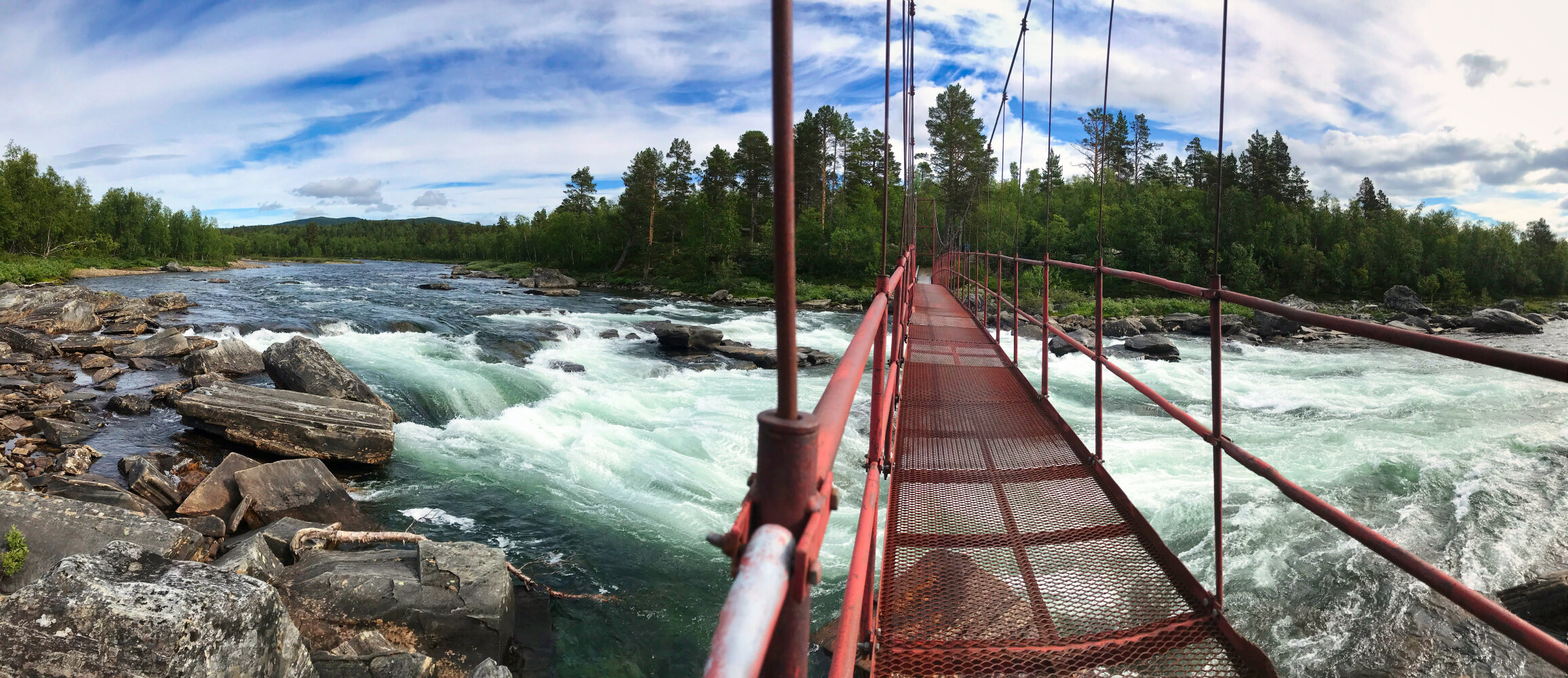
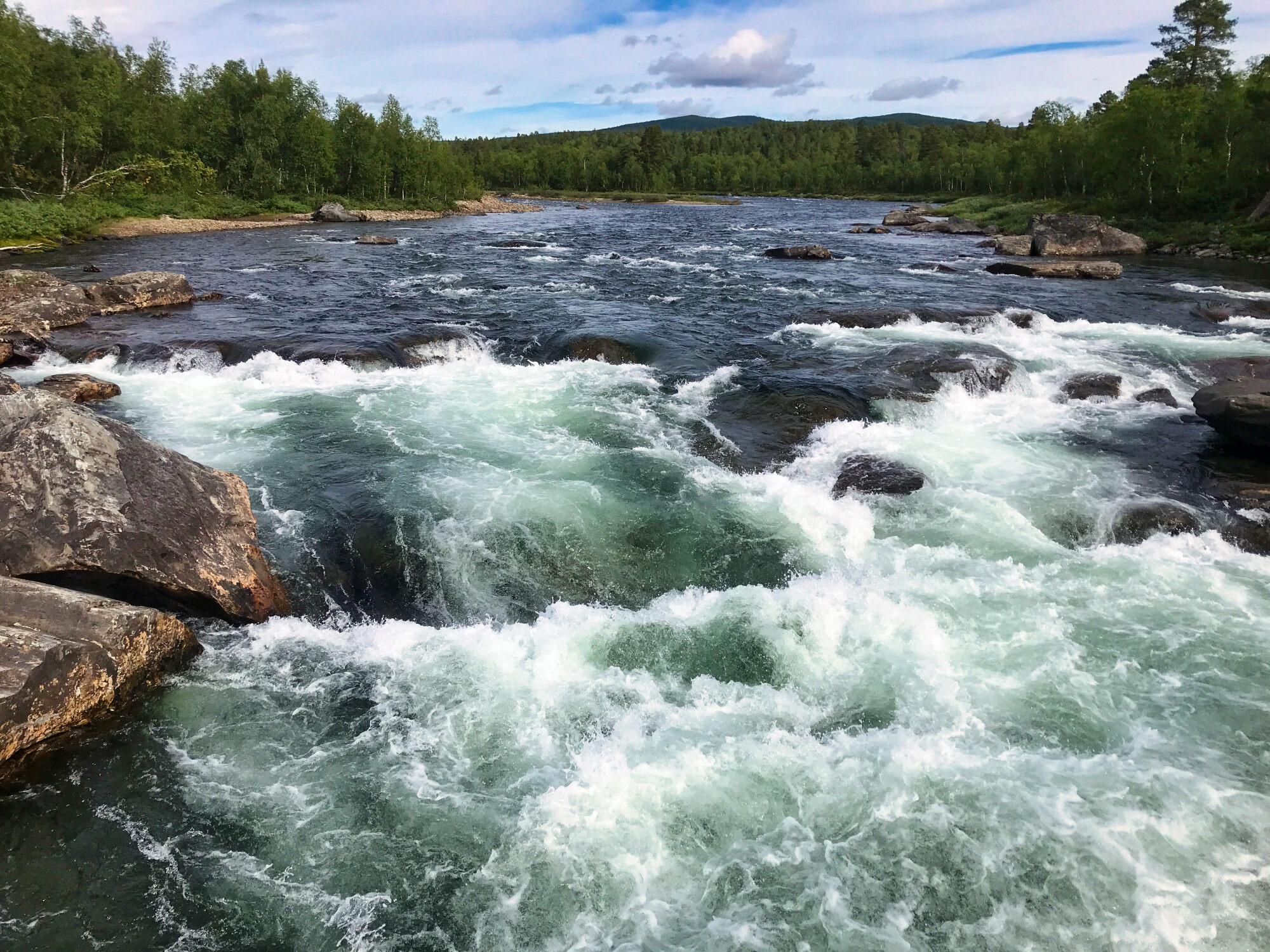
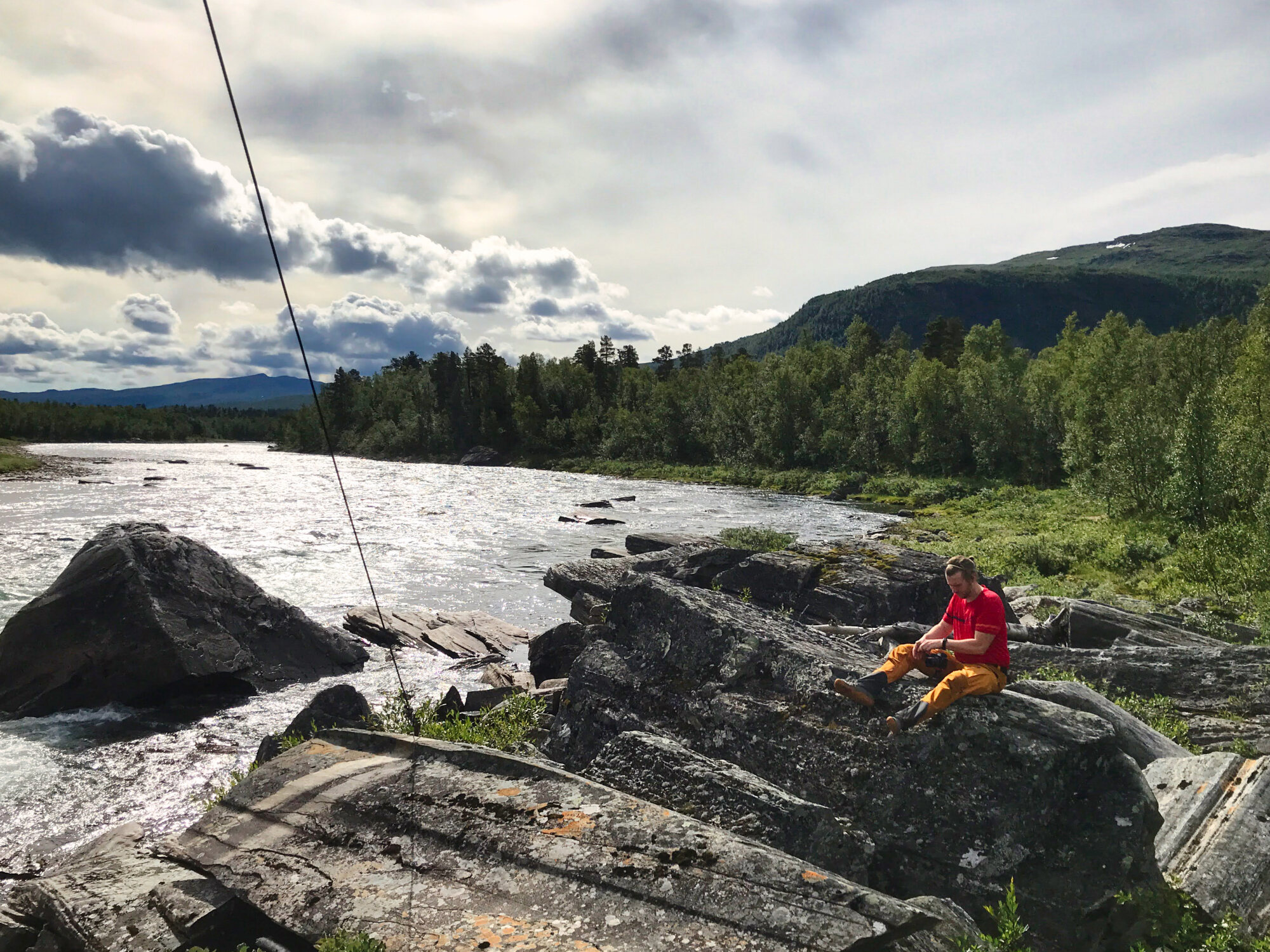

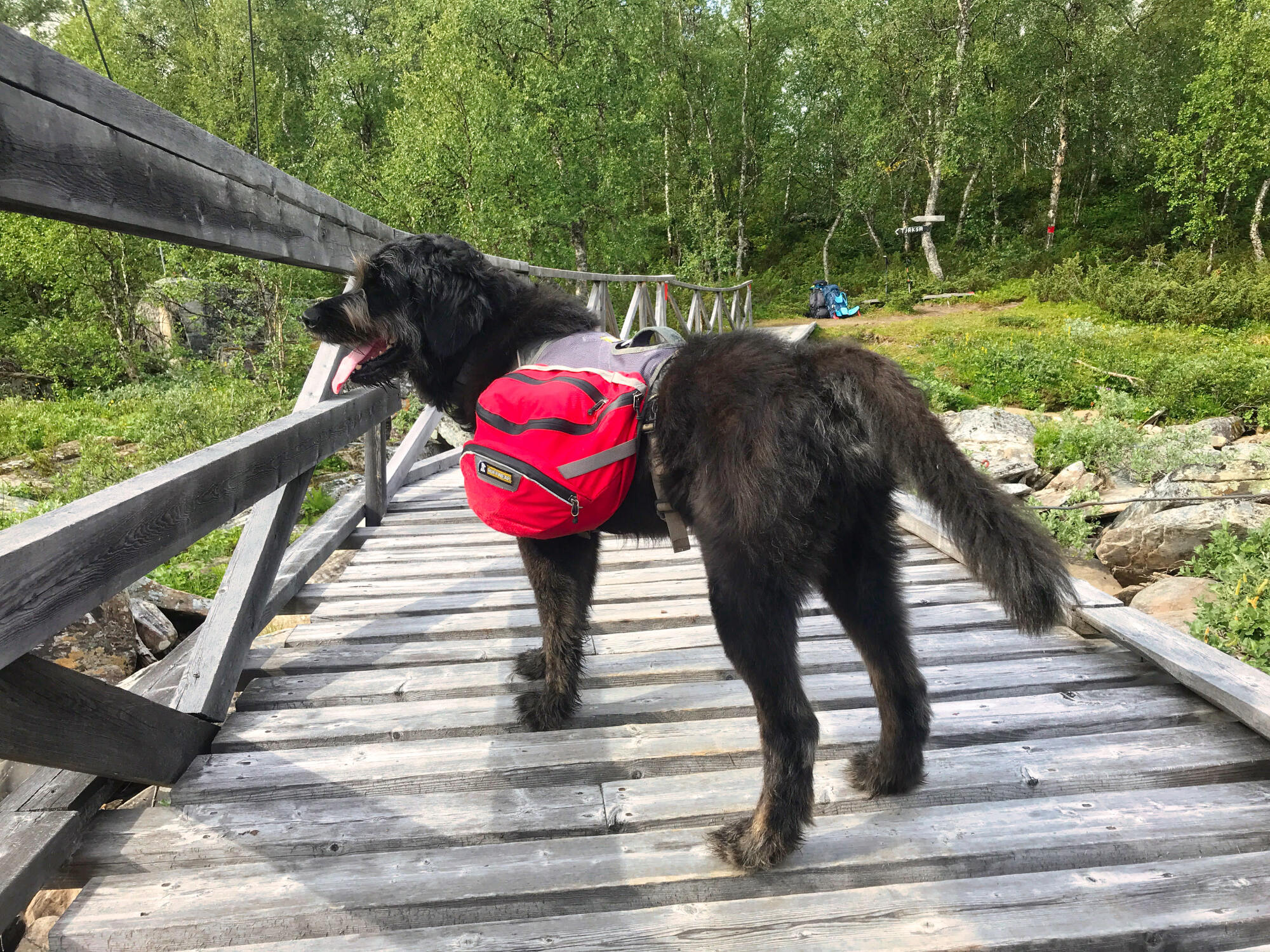
Fishermen’s luck at Bárasjuhka – 20 fish are not enough
We tear ourselves away from the sight of Laisälven and continue walking. A flower meadow now lies to both sides of the trail, which is very unusual for the Kungsleden. Soon we hear the next water rushing and after a bend in the trail we walk directly along the bank of the Bárasjuhka for a while. The powerful stream is one of the largest inflows of the Laisälven and it creates a pleasant breeze. In addition, a light drizzle starts, which offers us a welcome cooling.
On the way to the next bridge a Swede comes towards us. He is with a group of fishermen, whom we meet a little later. As he explains to us, they had no fishing luck this year: in the group of ten they could catch only 20 fish. To me, that sounds like a lot, but he seems used to more.
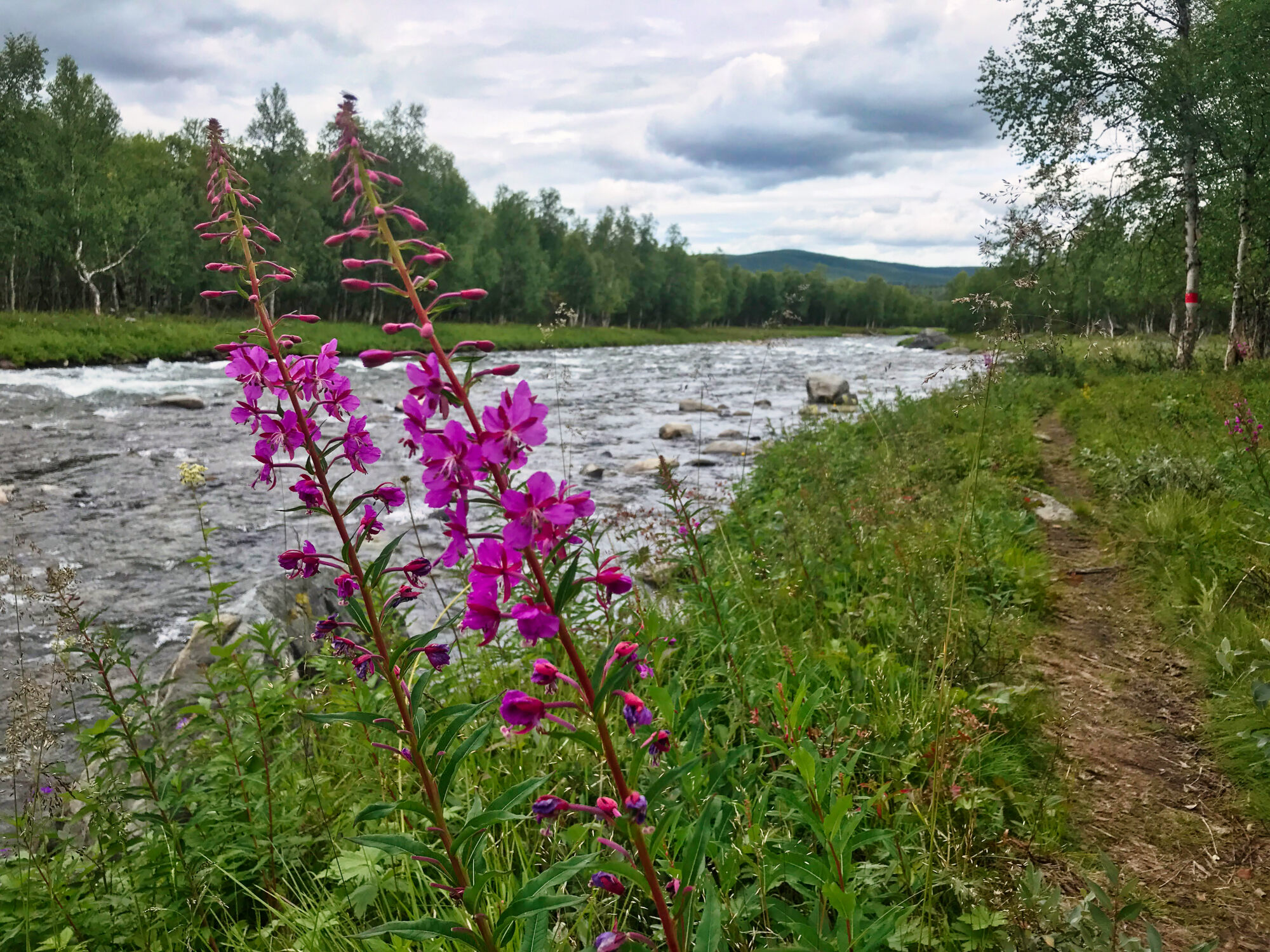
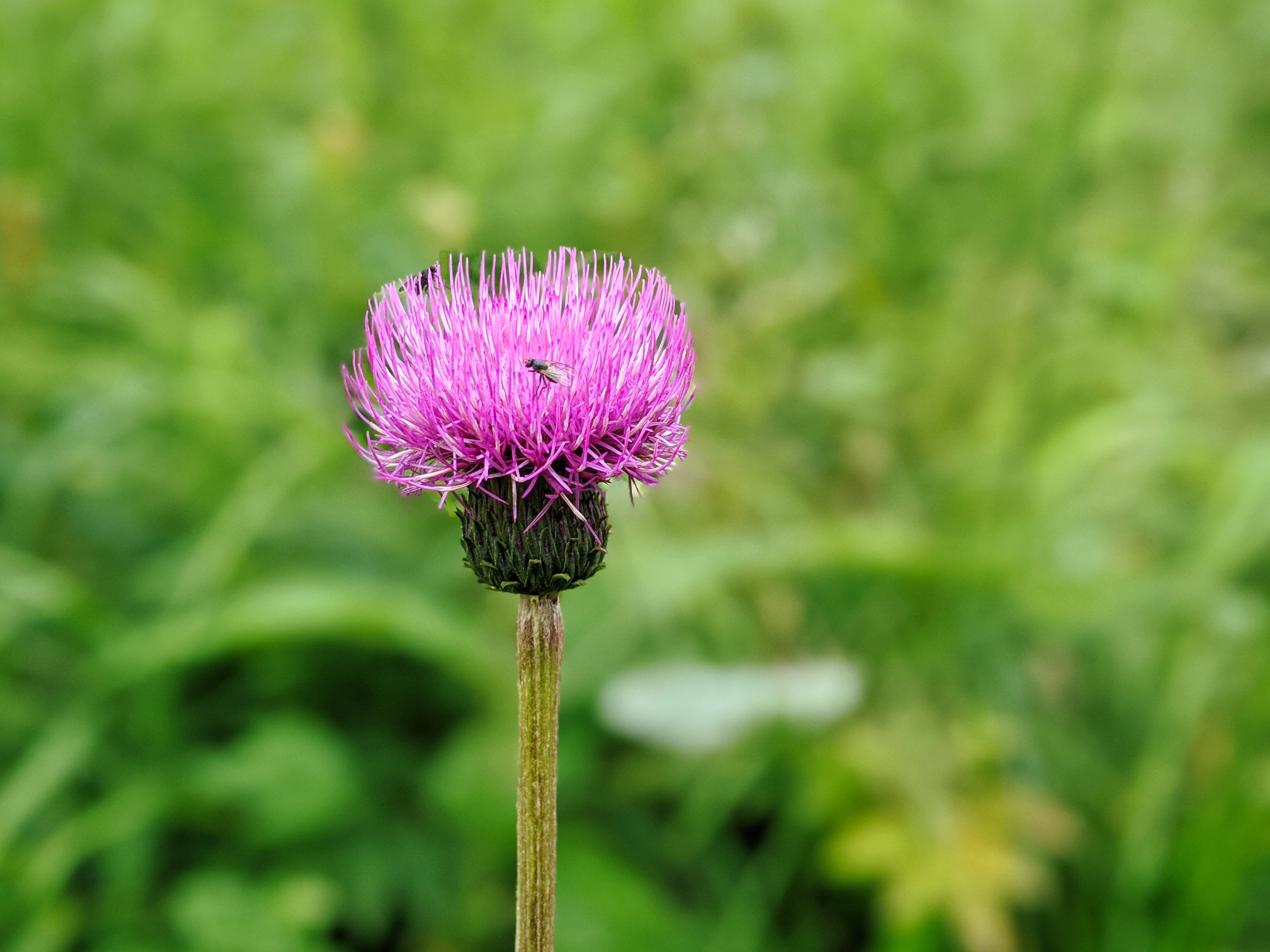

Now the trail heads uphill again
We cross the river Bárasjuhka at another bridge, where we also find a small but well-equipped shelter. Especially the wood supply is considerable, here you could heat up properly in winter! From the hut we start to climb up the mountain. We have 350 meters of altitude ahead of us. However, we continue to feel amazingly well, especially when we finally reach the timberline again, and the mosquitoes become fewer and the views more distant. Looking back we see Pieljekaise, which we passed on the first day. We also see exciting looking mountains in front of us, partly still covered with some snowfields.
At the top, a vast plateau stretches out ahead of us. We take a short rest and eat some of our snacks that we have put in our hip belt pockets in the morning for the day. That way we always have something quickly at hand and don’t have to unpack the stove.
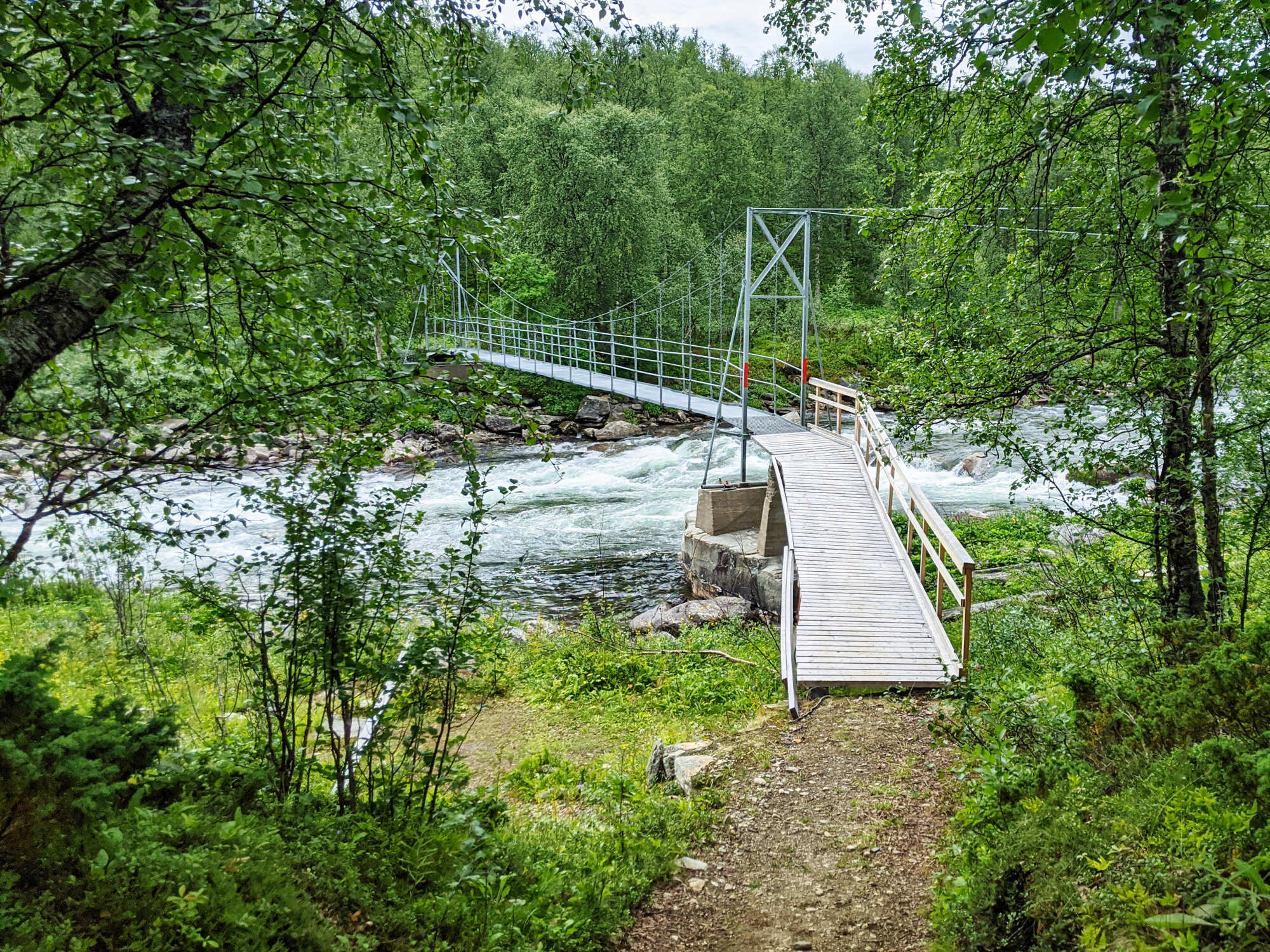
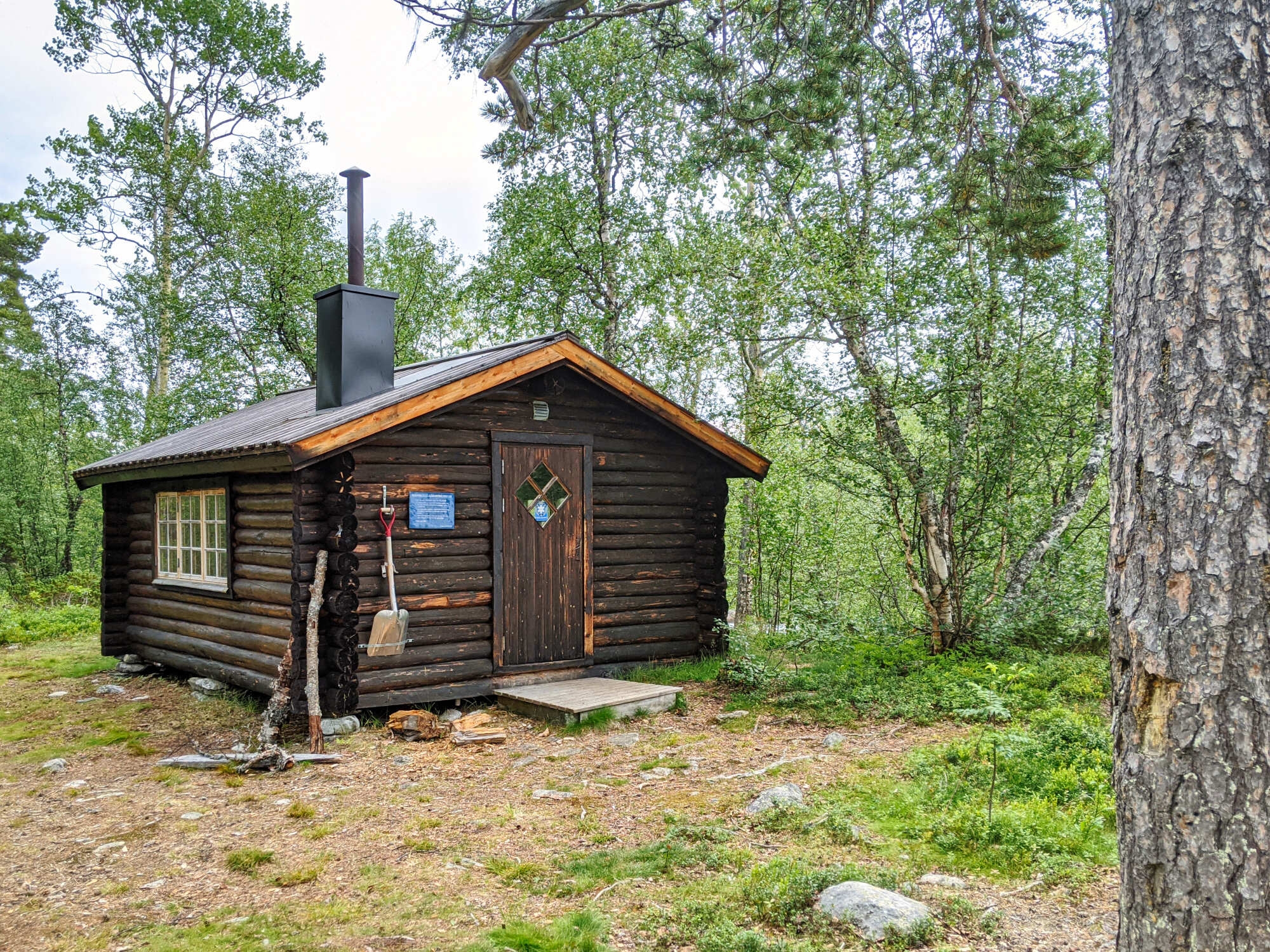


Mosquitoes and beetles on their mating flight are everywhere on our way to the Sjnulttjie hut
Unfortunately, the plateau ends again soon and so does the nice part of the day. Now we enter the forest once more and the path becomes strenuous. We reach a bird sanctuary where it is only allowed to stay overnight in two places. Our destination is the first overnight stop, the hut with the sweet name Sjnulttjie. Although it is at most five kilometers to our destination, the way there drags on forever.
All around us are small lakes and we can well imagine that birds feel at home here. However, we do not see any birds. We do not like the Kungsleden since Jäckvik so far. But we have hope for the section to Ammarnäs. Until then we fight with mosquitoes and a horde of beetles on their mating flight.
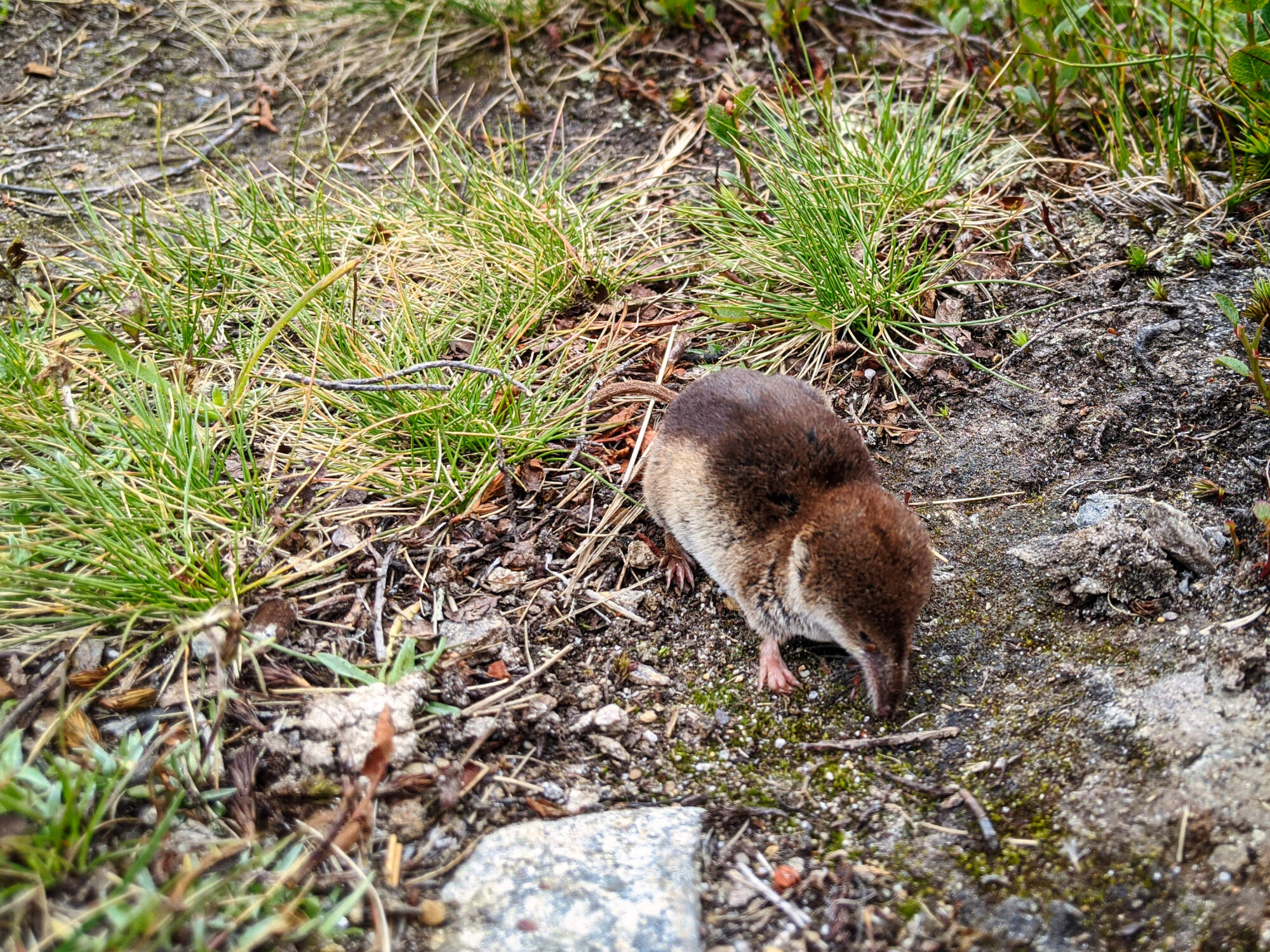
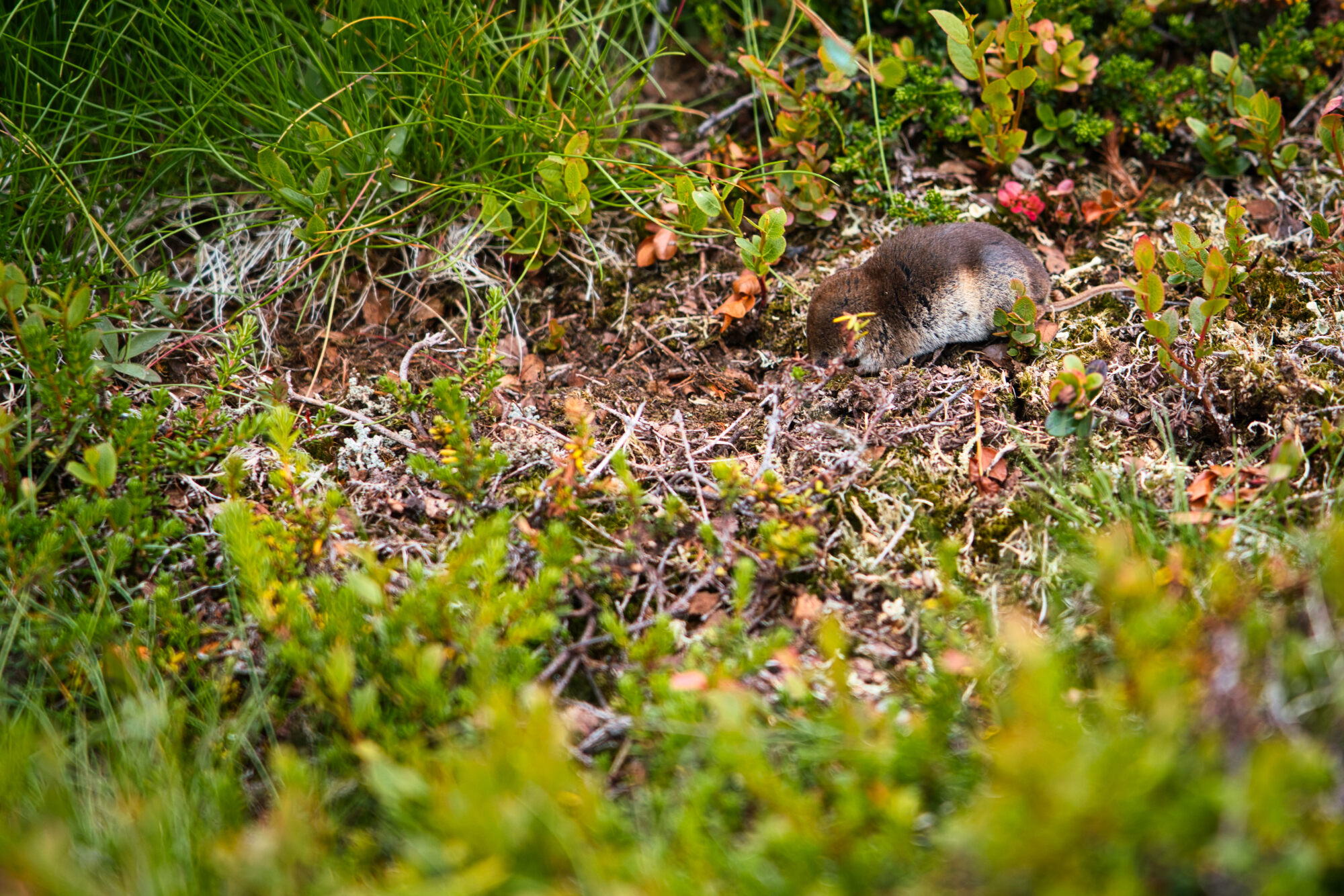

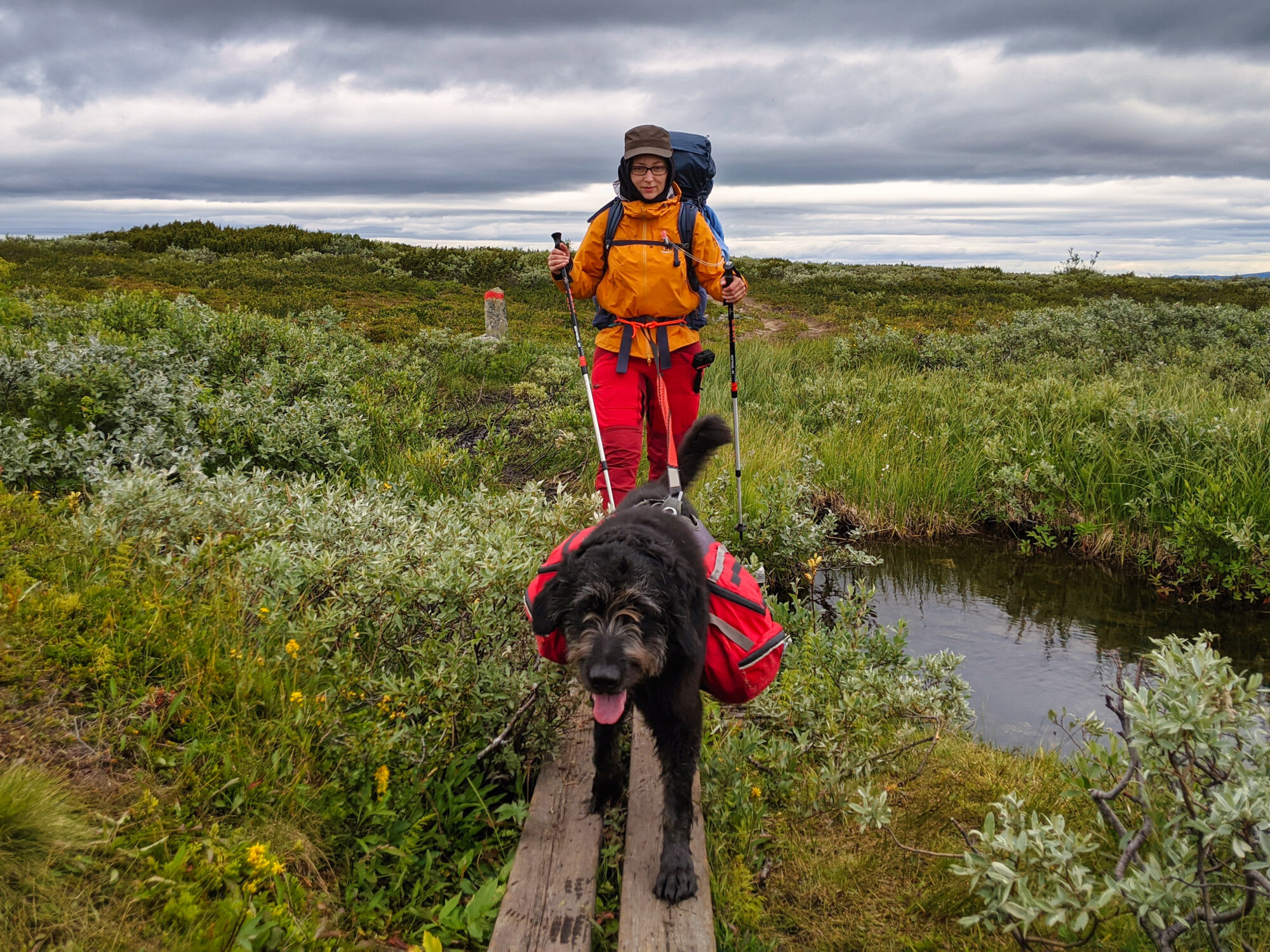
Bird sanctuary
In the bird sanctuary around the Sjnulttjie cabin nests the globally endangered Lesser White-fronted Goose. It is the rarest goose species in Europe. There are only about 60-90 nesting pairs left in Lapland, including this bird sanctuary. Therefore it is forbidden to enter the area between 09.05. and 14.08.. The only exception is the Kungsleden. Dogs are allowed on the Kungsleden, but must be kept on a leash on the trail. Overnight stays are only allowed at two marked places. One of them is the Sjnulttjie hut.
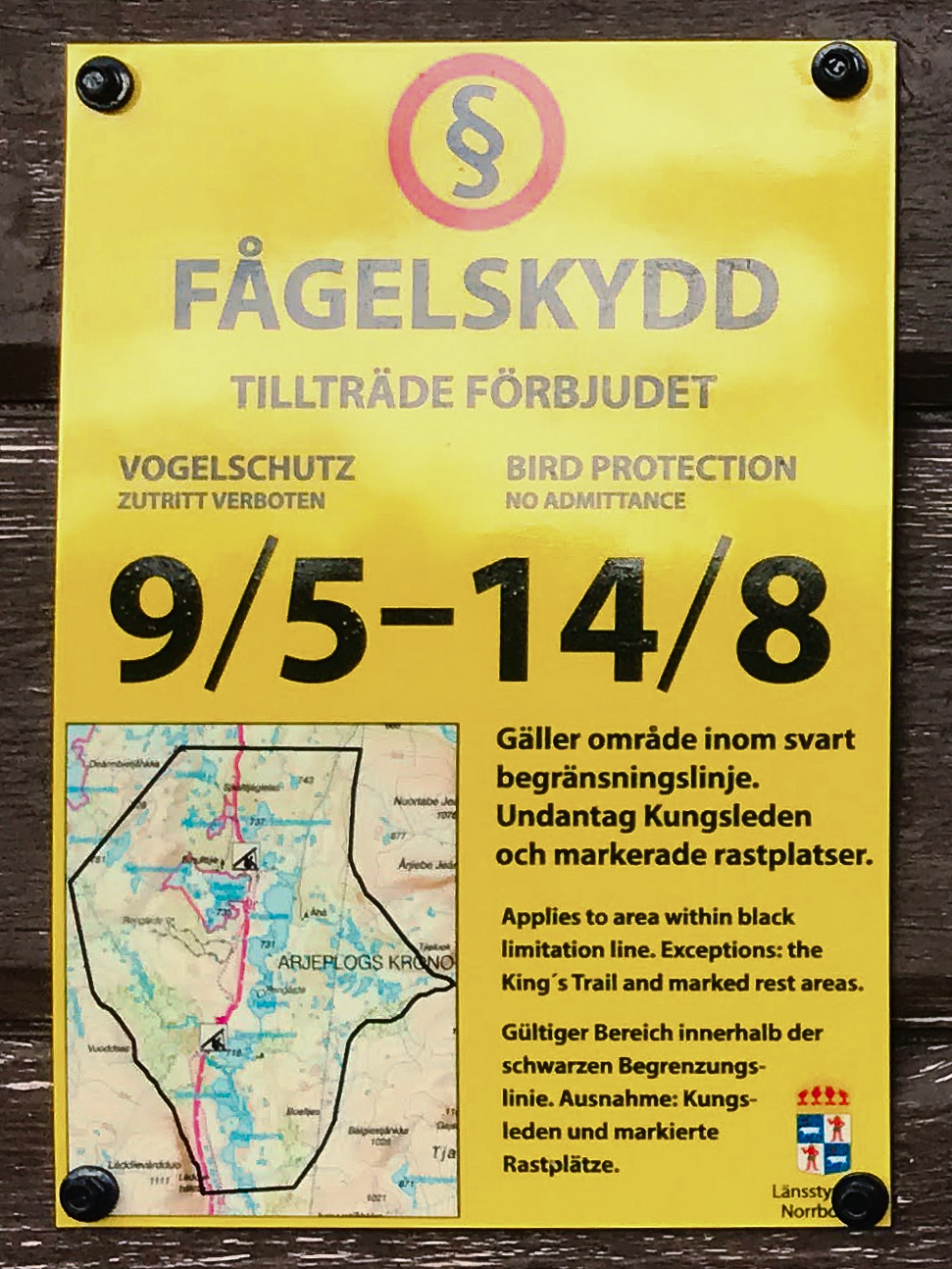
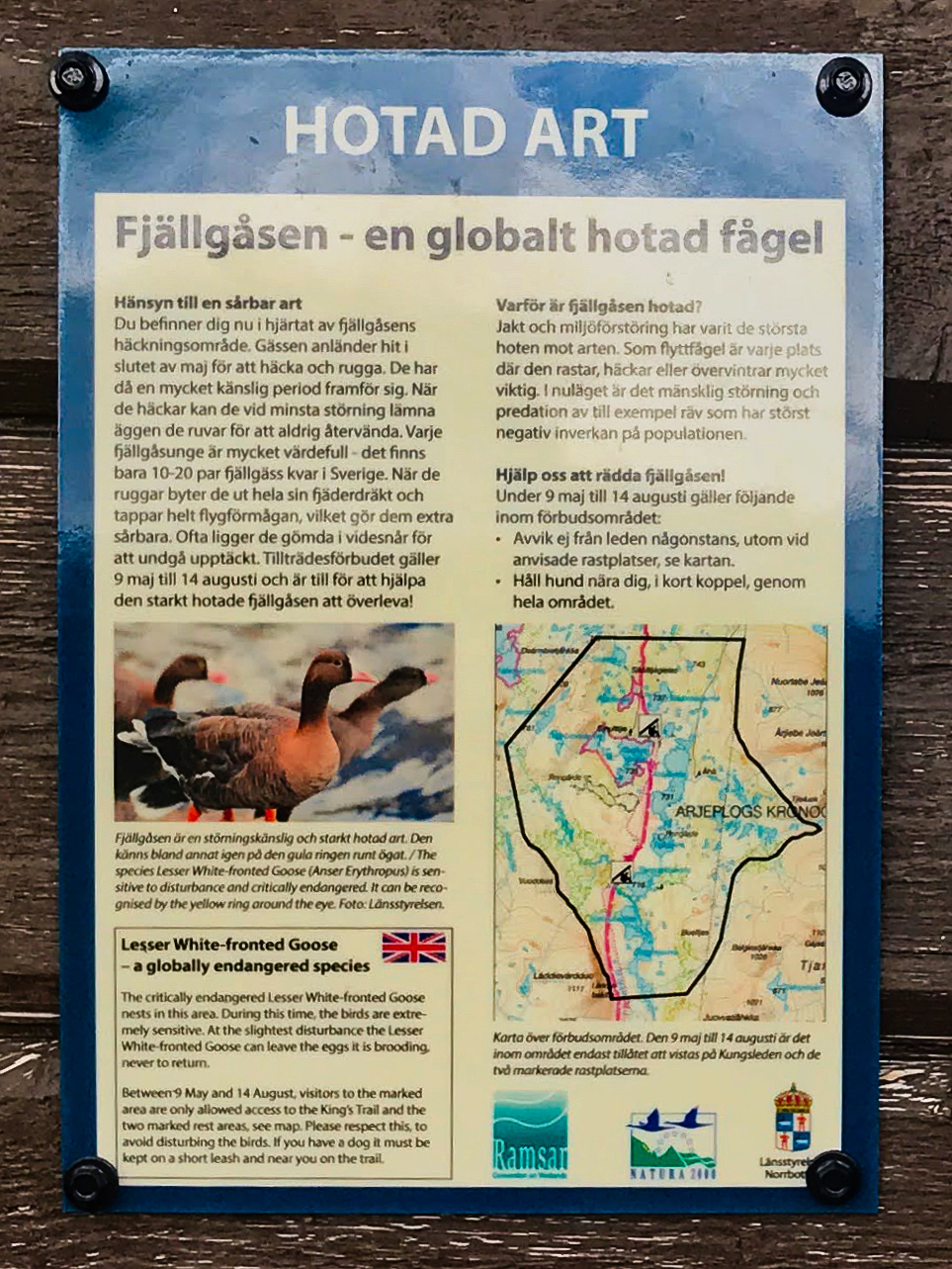
Our nerves are on edge at the Sjnulttjie hut tonight
When we finally arrive at the hut, our nerves are on edge. Even Lando is completely freaked out by the annoying insects. We bring him into the hut first and quickly set up our tent. After the first 30 minutes inside the hut we agree that we will never get rid of the mosquitoes and that the air is quickly consumed if we have to keep the windows closed. For dinner we use the cabin anyways, as this way we have at least a little bit of space as well as a table and seating.
After the meal we bring our whole backpacks into the tent and open them unlike usual not until we are inside. Then we set up our bed for the night. Tired we fall directly into bed, while around us the mosquitoes buzz loudly. Of course Lando is allowed to sleep in the tent with us under these circumstances.
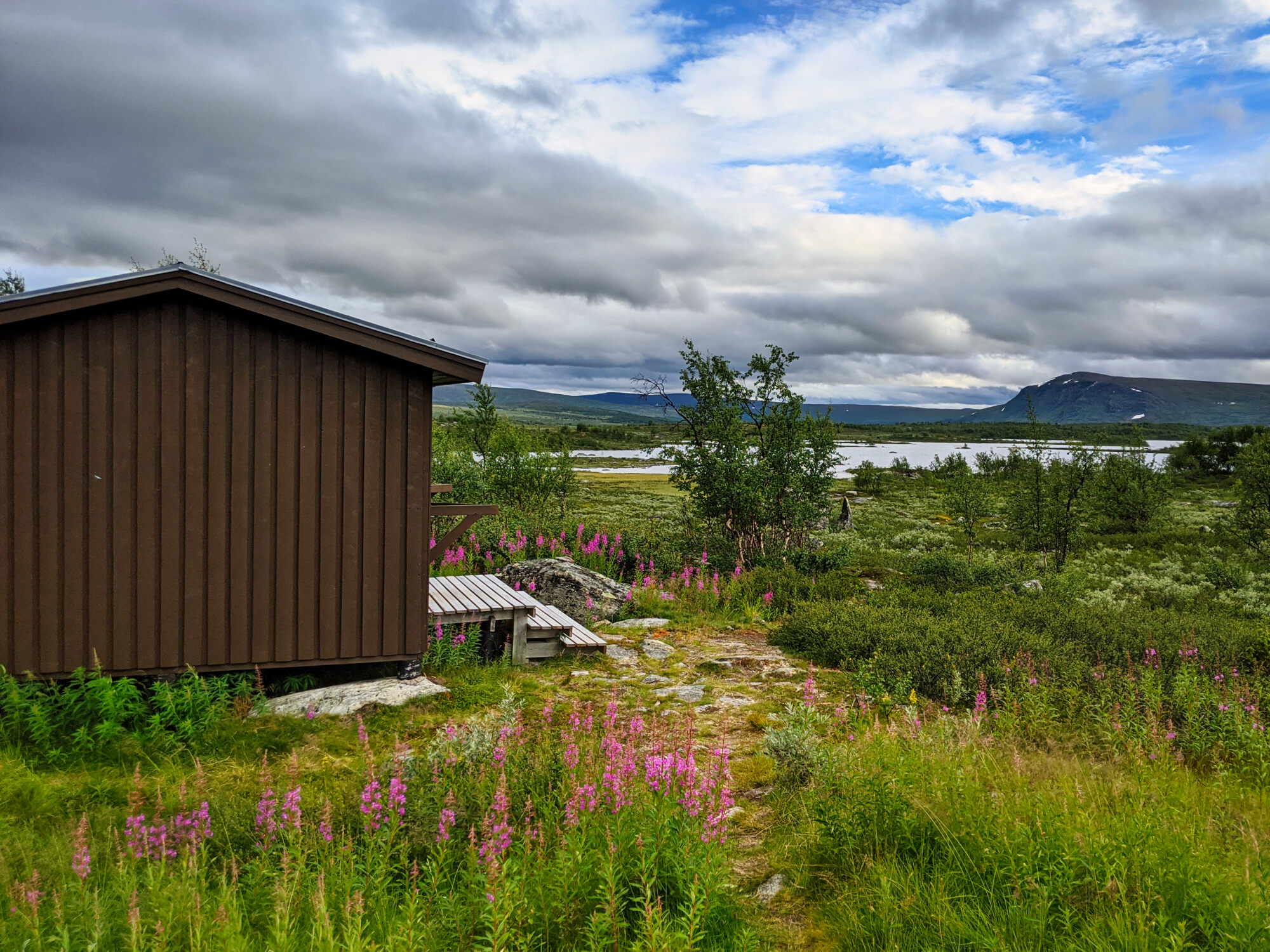
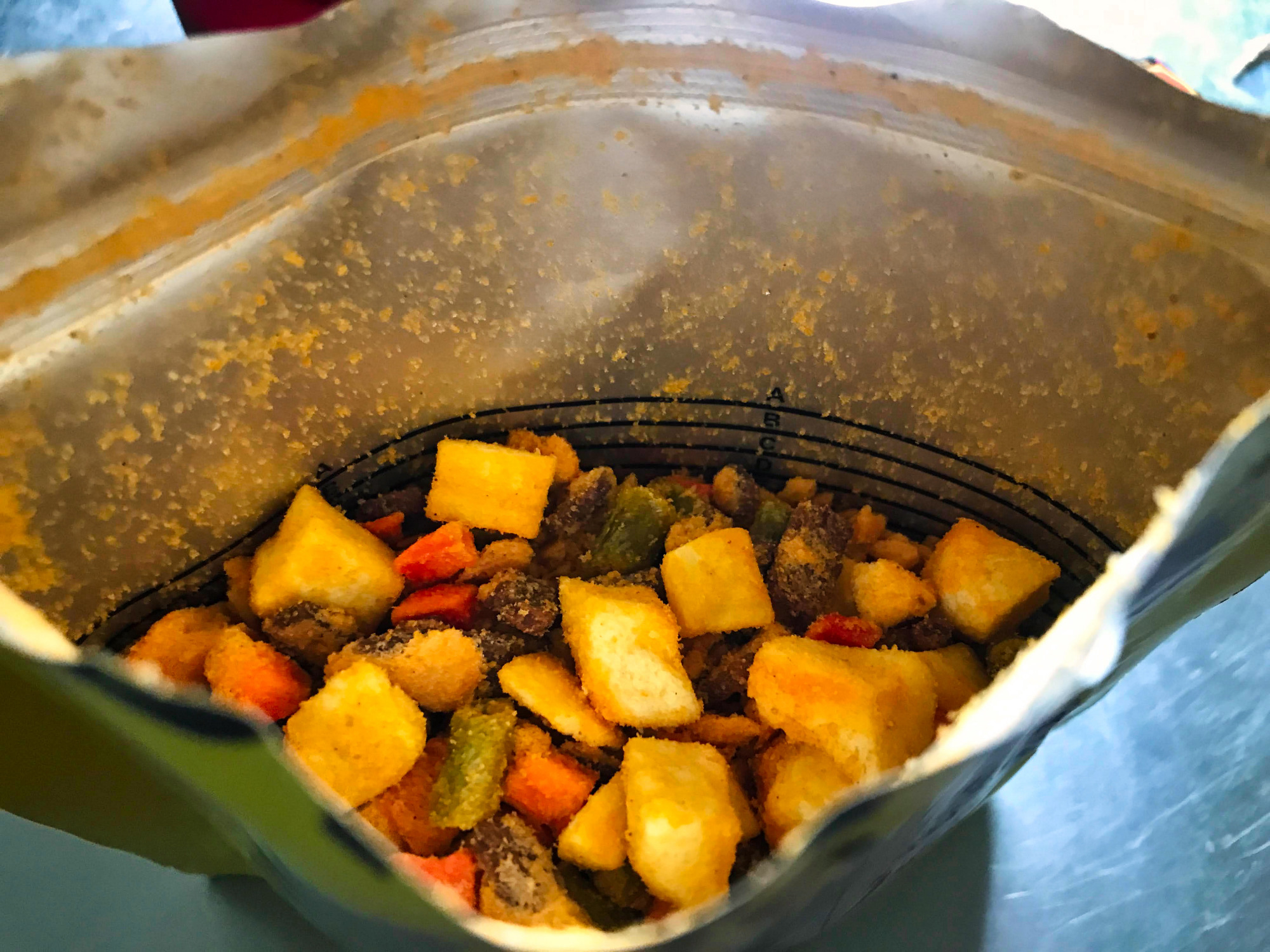
Sjnulttjie Shelter
A little off the Kungsleden lies the small shelter Sjnulttjie. Inside we find the typical furnishing of Swedish shelters: a table with a bench, a fireplace, some firewood and a broom. Right next to the hut we find a reasonably plain campsite. There are not many other spots here, because the vegetation covers the damp and stony ground.

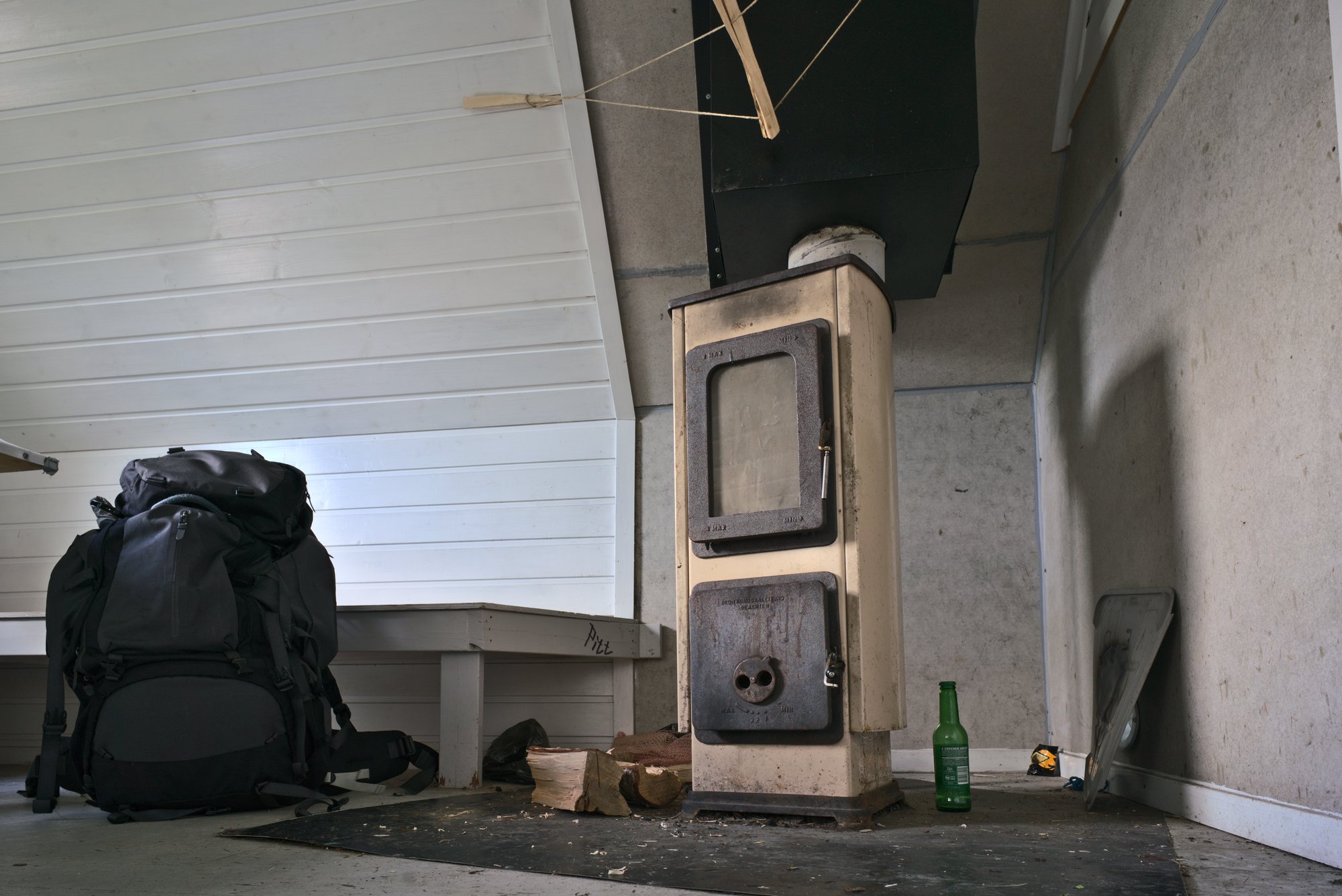
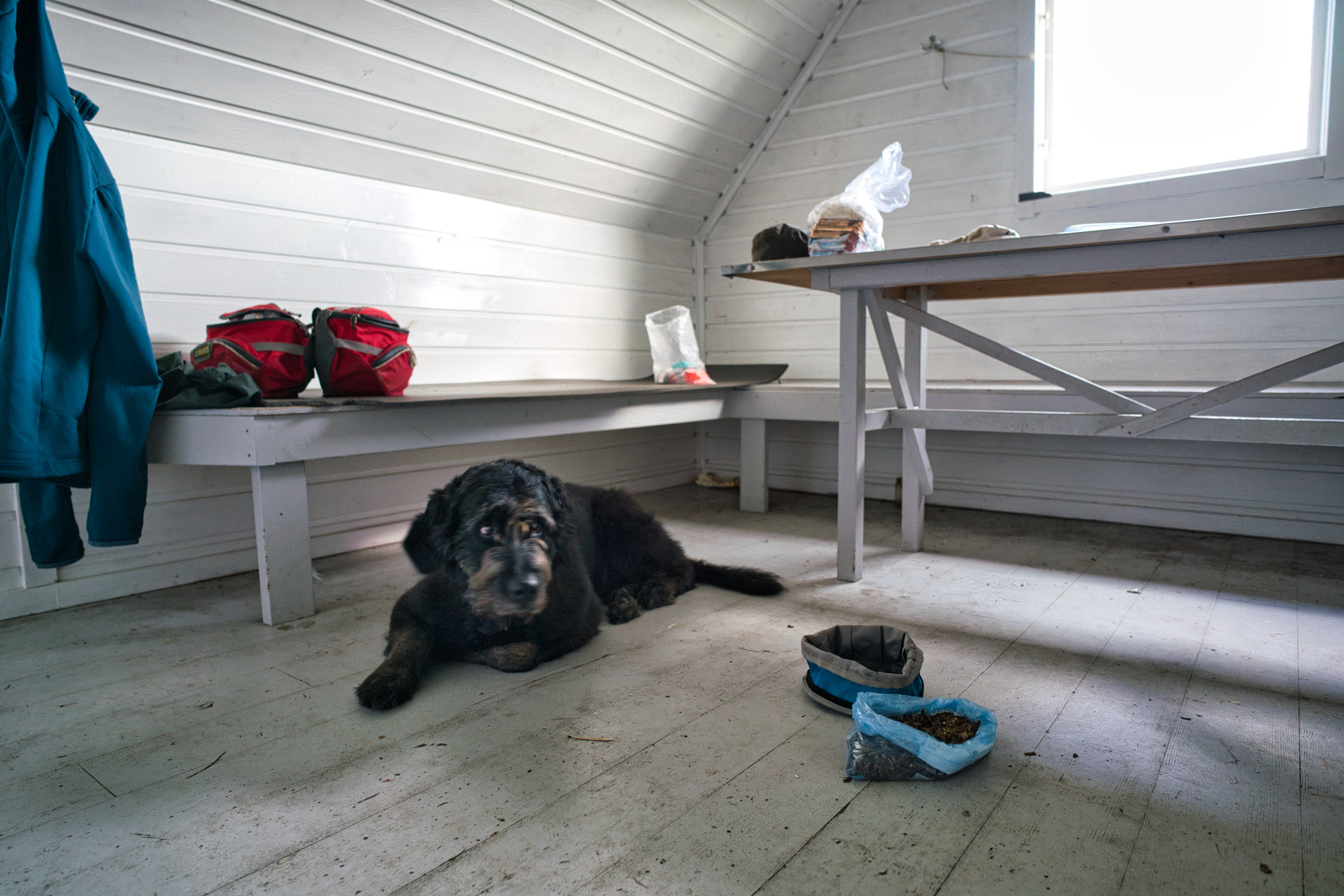

Wärdshus Bäverholmen
Description
The Wärdshus offers a total of 35 beds. Around the guesthouse you can camp on the meadow and the price also includes the use of showers and toilets. Restaurant and sauna are an additional highlight.
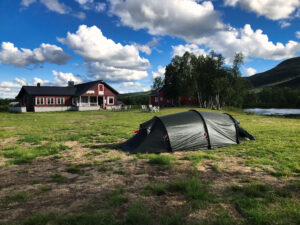
Day 3: Bäverholmen - Sjnulttjie
Profile
Description
The stage from Bäverholmen to Sjnulttjie is exhausting: although the path is good to walk, mosquitoes and bugs annoy us on this leg! Attention when planning the overnight stay: within the bird sanctuary you are only allowed to camp in designated places.
Sjnulttjie
Description
Inside the Sjnulttjie hut we find the typical furnishing of Swedish shelters: a table with a bench, a fireplace, some firewood and a broom. Right next to the hut we find a reasonably plain campsite.
